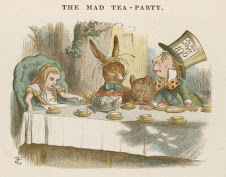Mutual mis-recognition is a defining characteristic of today's overarching duopolist ideological formation. Consider these findings from a recent Rasmussen survey of Democratic and Republican voters.
Among Republicans:
Fifty-four percent (54%) of GOP voters say the average Republican congressman is more liberal than they are, while 23% say their views are about the same. Just 20% believe the average GOP representative in Congress is more conservative than the average Republican voter . . . The survey also shows that Democrats don’t understand how the GOP base sees things. A solid plurality of Democrats (42%) believes that the average Republican in Congress is more conservative than the average GOP voter.
Among Democrats, on the other hand:
The plurality (47%) of Democratic voters . . . feel the party’s average member of Congress shares the same ideological perspective that they do. The rest are evenly divided: just 26% consider the average Democratic member of Congress more liberal than they are, while 25% say the average Democratic congressman is more conservative . . . most Republicans and voters not affiliated with either party think Democrats in Congress have lost touch with the party’s voters nationwide. Seventy-two percent (72%) of Republicans and 61% of unaffiliated voters think the average Democratic member of Congress is more liberal than the average Democratic voter.
Of course, taking the views of Republicans and Democrats into consideration only accounts for three-fifths of the story.
Nancy Hanks relays a comparative graphic of independent identification as surveyed by Pew Research:









No comments:
Post a Comment